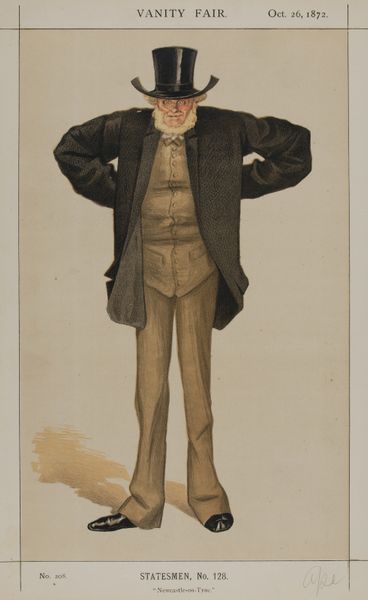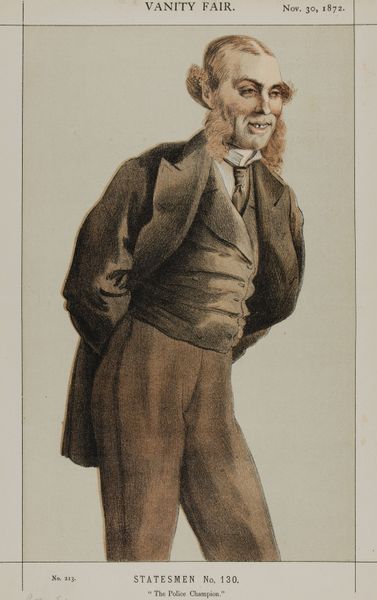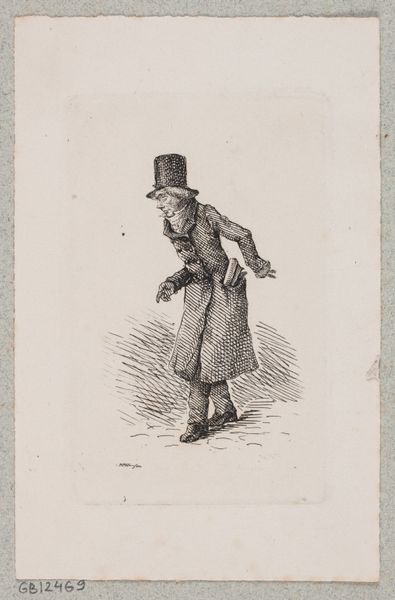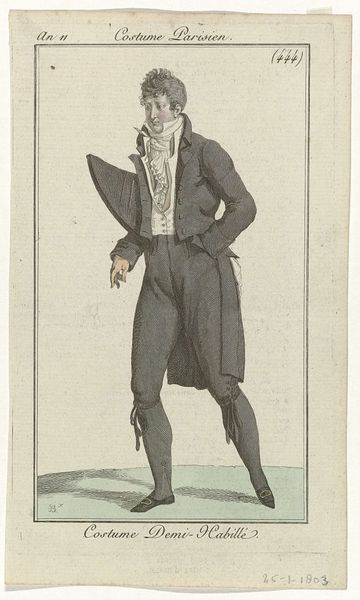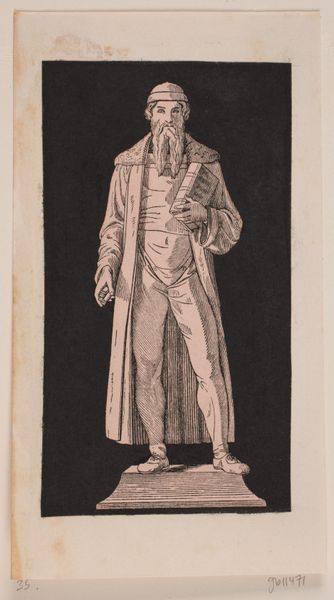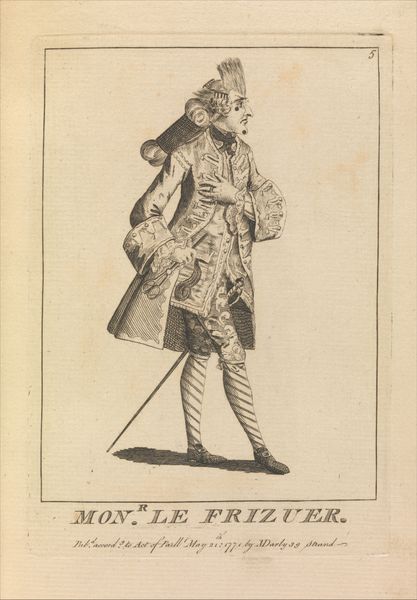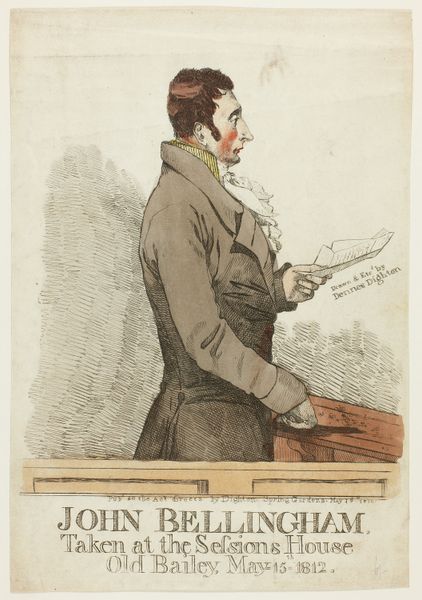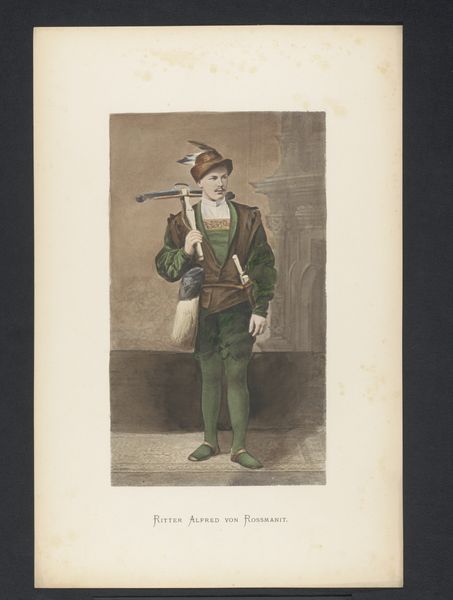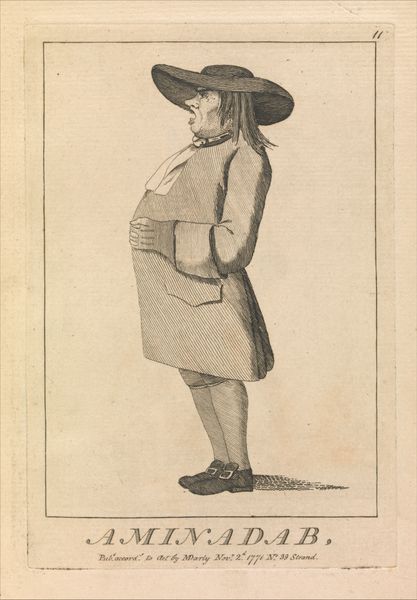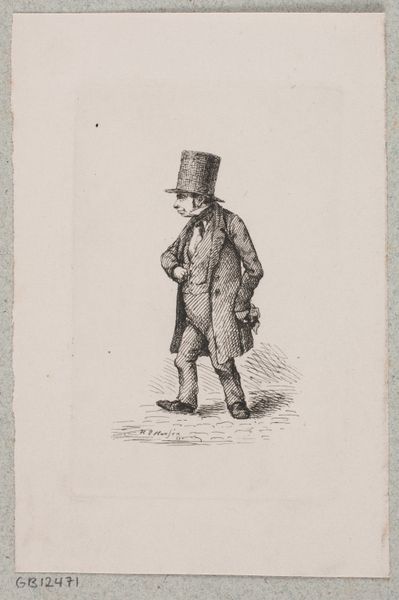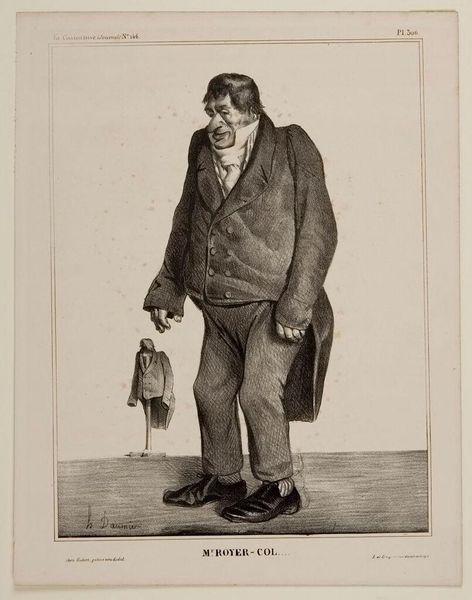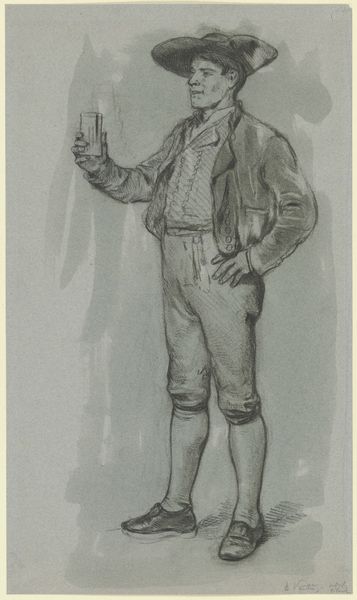
graphic-art, print
#
portrait
#
graphic-art
# print
#
caricature
Copyright: Public domain
Curator: The commanding posture! The figure presented seems rooted, assured. How striking, wouldn't you agree? Editor: It's an image steeped in the visual language of power. The subject's bulk, his elevated stance, and the almost condescending gaze – it's all quite calculated, though tinged with the slightly comical. This is "Statesman No.093 - Caricature of The Duke of Rutland," a print by James Tissot, dated 1871. Curator: Caricature is key here. We see not merely a representation, but an active interpretation and social commentary embedded in the printmaking itself. Editor: The texture! Notice how the etching and watercolor work together, almost mimicking fabric in certain areas. See how Tissot has reduced him to these key features, a certain aloofness conveyed in the slumped shoulders and the puffed out belly. The subtle colouring directs our gaze, structuring how we view and process him as the 'Duke.' Curator: That very same colouring is interesting to dissect further. Consider how printed images like this served the purpose of social currency and visibility. We see how print media democratized the accessibility and circulation of portraits and images for the developing middle class and beyond. Editor: Fascinating. So, instead of dwelling purely on the formal distortion, you bring in the socio-economic dimensions tied to production and distribution of prints in 19th century society? Curator: Absolutely. We cannot understand such imagery unless we study the conditions and networks that allow an artist to transform a man into a ‘statesman’—then share that image broadly with public audiences, many of whom consume that very product for their daily consumption of social and political information. Editor: It challenges the traditional aura around portraiture. No longer just for private admiration. These visual statements now played into politics, public identity... Curator: Indeed. As for this particular subject, I cannot help but see the careful crafting and negotiation of public personas through material means. Tissot uses colour and tone here, a reminder of image circulation, power and status that speaks volumes even today.
Comments
No comments
Be the first to comment and join the conversation on the ultimate creative platform.
